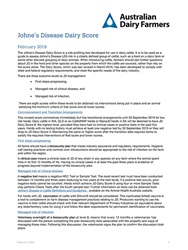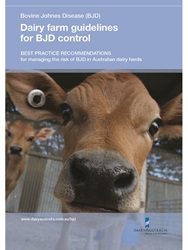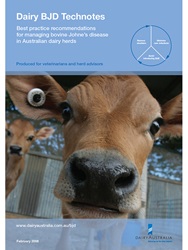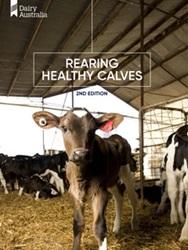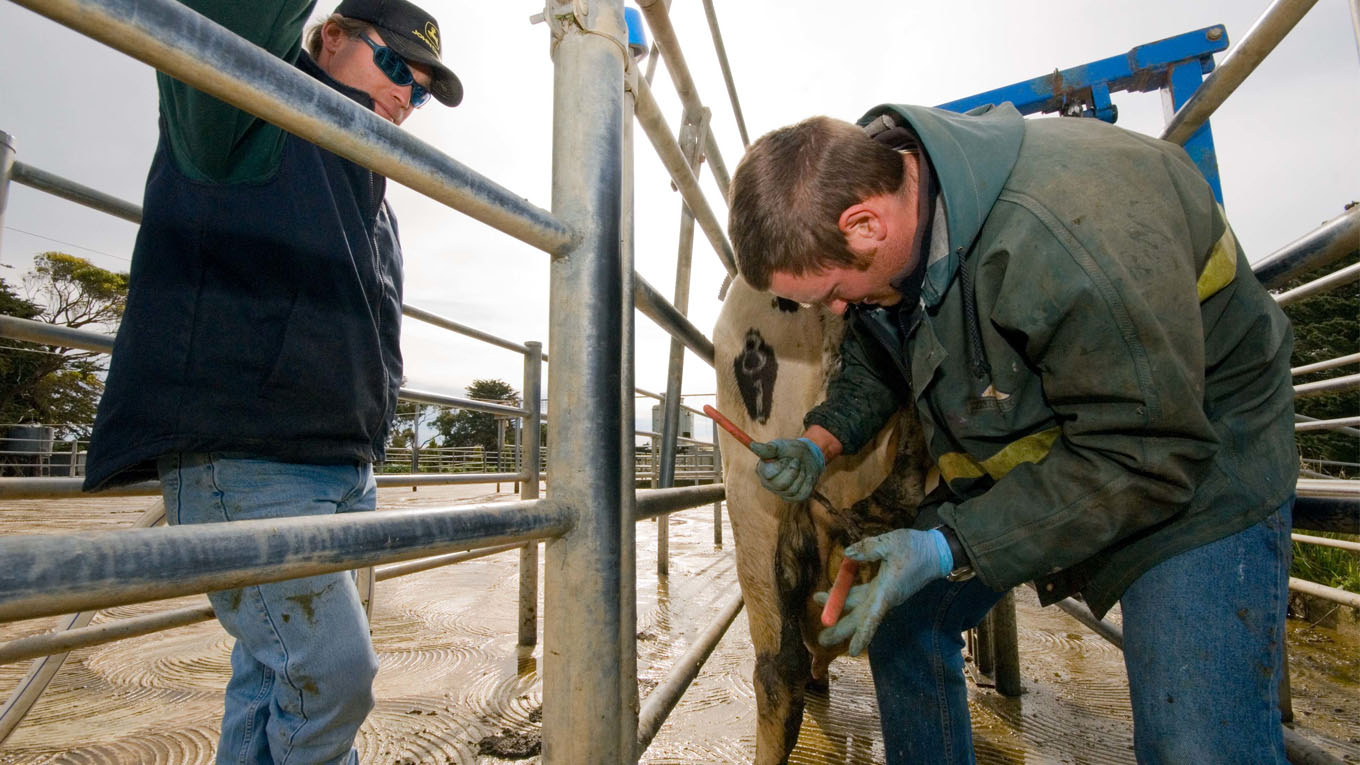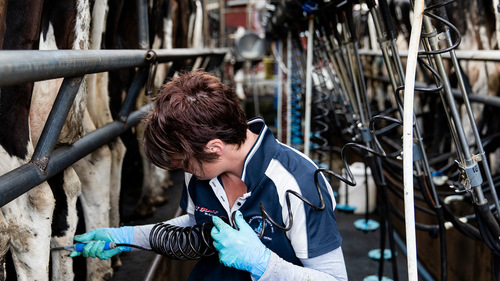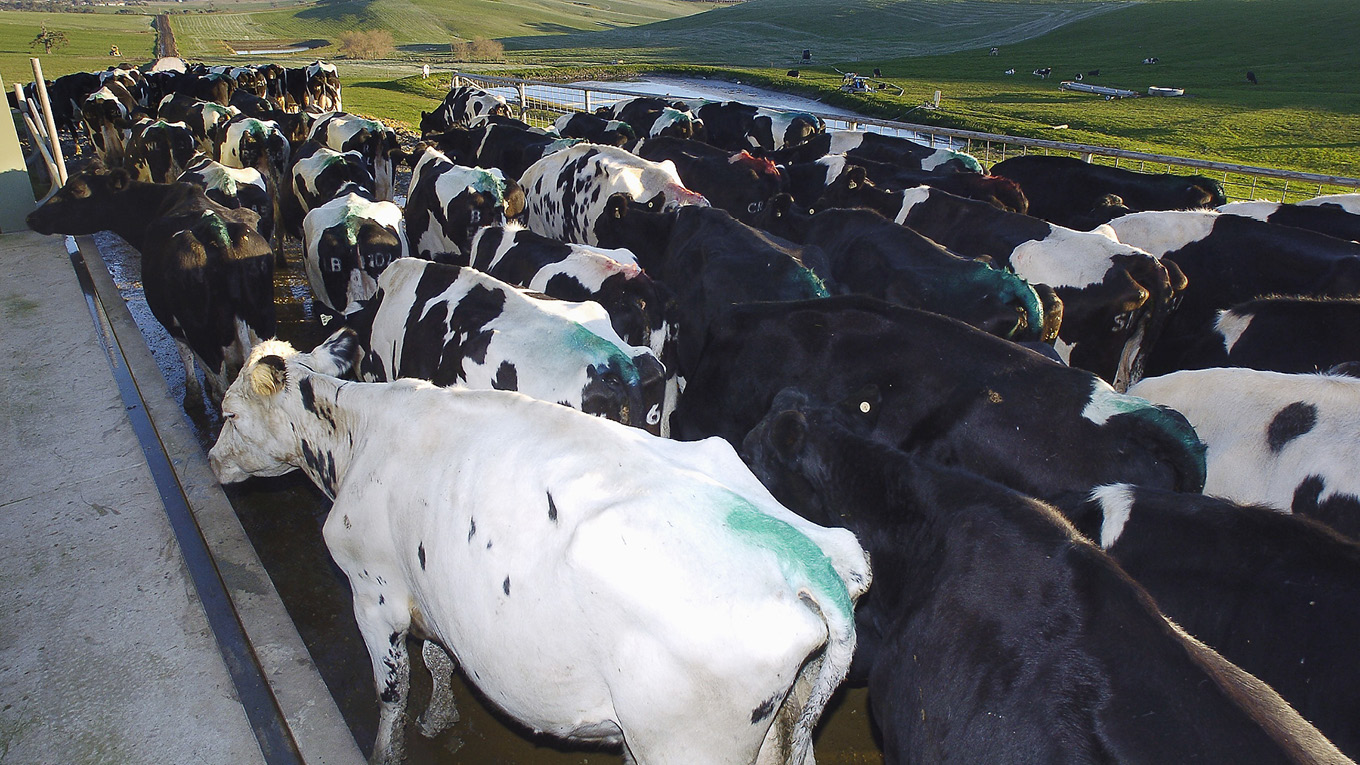Bovine Johne's Disease (BJD)
On this page
Bovine Johne's Disease (BJD) is the most common disease causing chronic diarrhoea in adult cattle. It is widespread in some parts of Australia and New Zealand.
Cause
BJD is caused by infection with the bacteria Mycobacterium paratuberculosis.
Spread
Infection with the bacteria occurs in young animals exposed to manure of infected adult animals.
Animals likely to be affected
The highest risk of infection is when calves are less than a month old. Calves then develop an age-related immunity and are relatively resistant to infection once they are a year old.
What to look for
As the disease has a long incubation period – often up to 4–5 years – many cattle infected with BJD will show no signs of the disease at all. As the disease progresses, infected cattle will begin to develop weight loss despite a good appetite, diarrhoea which may wax and wane, reduced milk production, the eventual development of "bottle jaw" (soft, fluid swelling under the jaw caused by low blood protein) and eventually death. Signs of BJD often appear following a period of stress such as calving, nutritional stress or other diseases.
Confirming the diagnosis
Confirming the diagnosis of BJD is difficult as the available laboratory tests are not very sensitive and have a high risk of false negatives. However, the risk of false positives with these tests is very low. The available tests rely on either laboratory examination of faeces, which look for the bacteria itself, or blood tests, which look for an immune response to the bacteria. Diagnosis can also be made on post-mortem examination in animals that were showing symptoms before they died, but is very difficult in animals that were not yet showing signs. In most states, suspicion or confirmation of BJD is notifiable to the state agriculture department.
Treatment
There is no treatment for BJD and animals showing symptoms should be culled.
Prevention
Following the three-step calf plan is a key steps for the control and prevention of BJD in dairy herds. This includes:
- Removing calves within 12 hours of birth
- Ensuring adult animals and effluent cannot contaminate the calf rearing area
- Young stock (up to 12 months old) should not be reared on pastures that have had adult animals on them for 12 months
In addition:
- Practicing good biosecurity and maintaining a closed herd if possible
- Testing and removal of infected animals from the herd
- Vaccination of calves before they reach one month old
Understanding more about BJD and how to manage the risk is an important first step.
BJD has been managed through various control programs in Australia. Since 2016, BJD has been voluntarily managed.
Johne's Disease Dairy Score
The revised Johne’s Disease Dairy Score (2019) was developed by Australian Dairy Farmers (ADF) in consultation with industry veterinarians, Animal Health Australia and state dairy farming organisations to:
- Provide an easily interpreted score for dairy farmers to profile their risk of BJD
- Enable farmers to introduce or sell dairy animals with some assurance as to their BJD status
- Clarify how vaccination can be used to control and reduce risk of BJD.
Dairy farmers can access the latest information on the new arrangement and a summary of requirements to achieve and maintain the score levels in the Johne's Disease Dairy Score 2020.
More information
- Animal Health Australia’s JD Cattle tools
- Dairy Australia’s tools for building and implementing an effective biosecurity plan
- Animal Health Australia’s tool for developing a farm biosecurity plan
Regionally specific information:
- Agriculture Victoria - Bovine Johne's Disease
- NSW Department of Primary Industries
- DPIPWE TAS - Bovine Johne's Disease
- Queensland Department of Agriculture, Fisheries and Forestry - Johne's disease
- Primary Industries and Regions South Australia
These publications contain important information and guidelines for best practice:
Dairy farm guidelines for BJD control
A booklet for dairy farmers containing best practice recommendations for managing BJD in Australia.
Technical guide on managing BJD
A technical booklet for veterinarians and herd advisers discussing best practice recommendations for managing BJD in Australia.
Rearing Healthy Calves Manual – second edition
External links
The following information may prove useful to understanding more about BJD and how it is being managed in Australia and overseas.
- Bovine Johne's Disease: Animal Health Australia
- University of Wisconsin Johne's Information Centre
- International Association for Paratuberculosis
